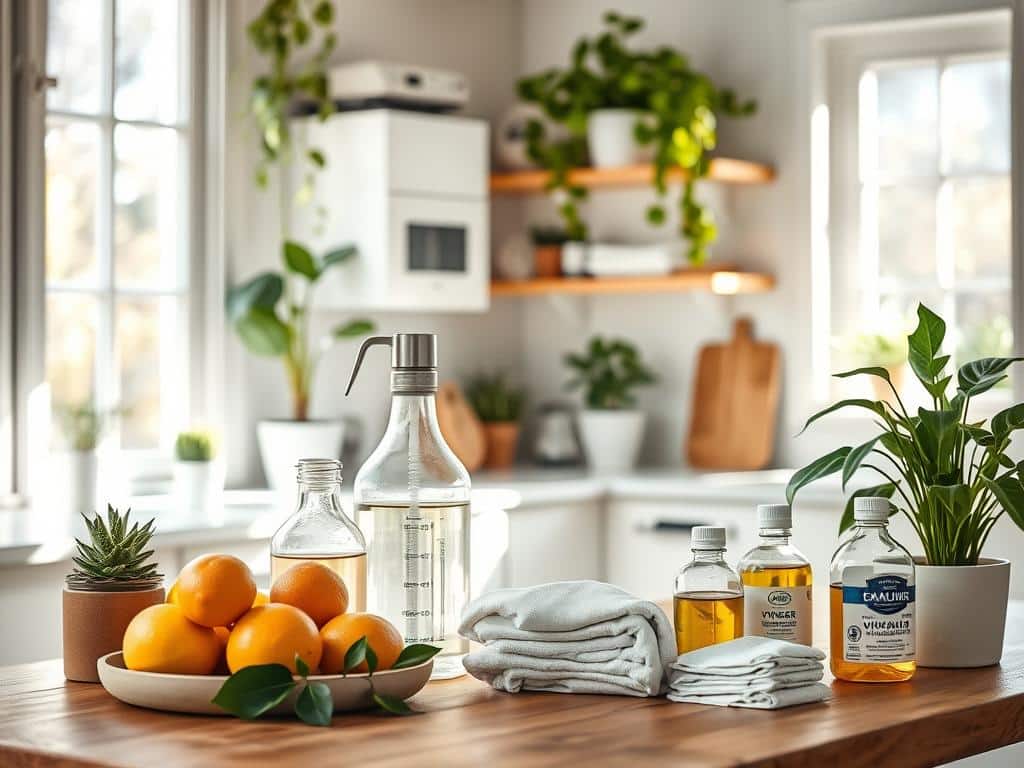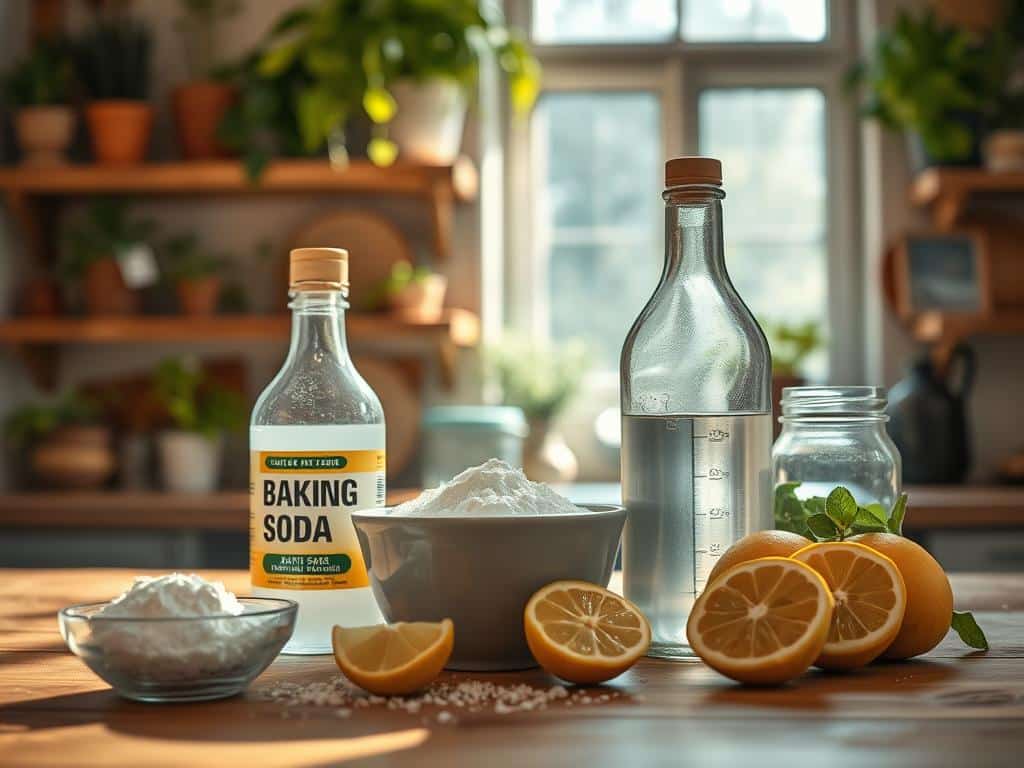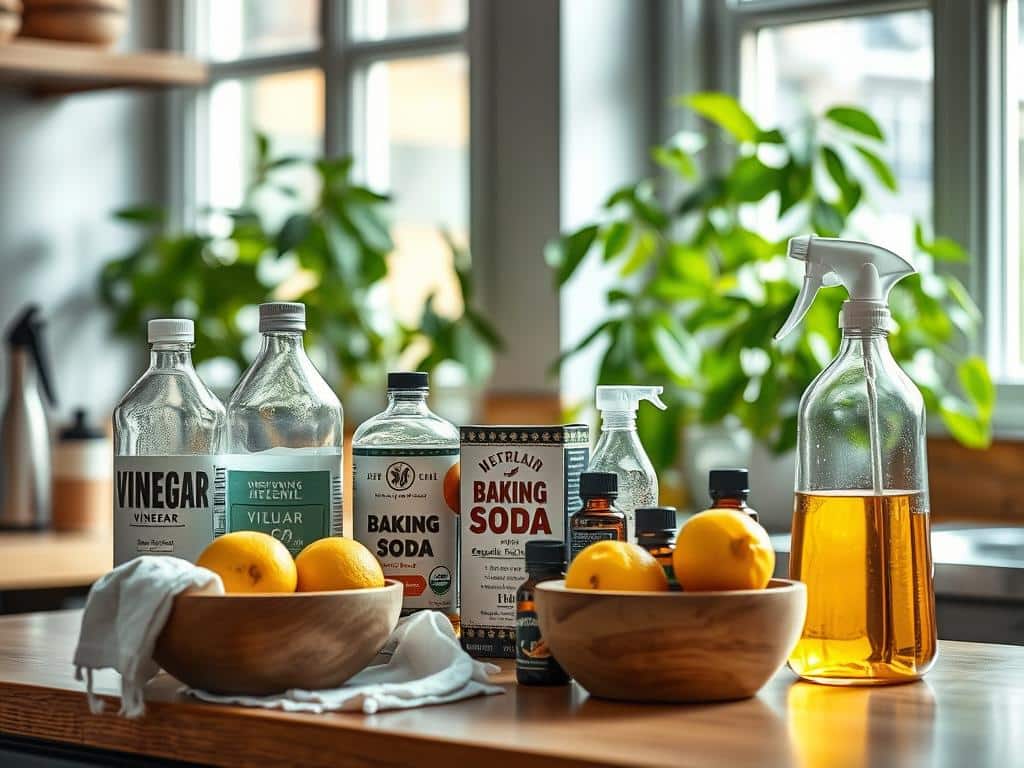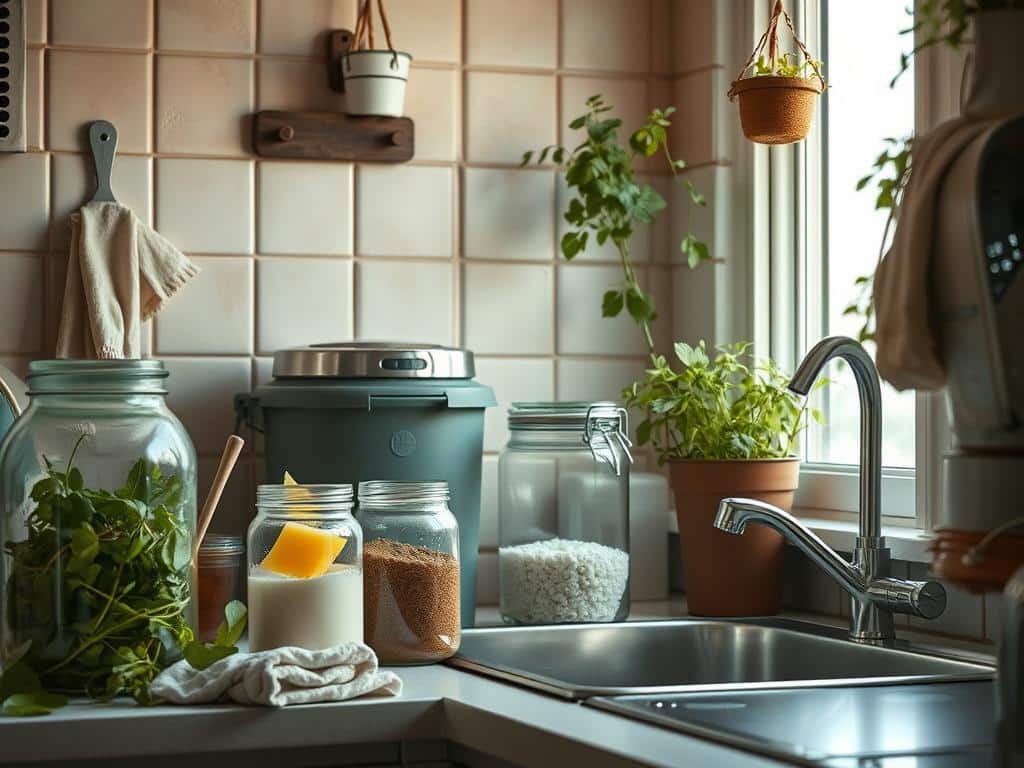
Recycling cleaning products is more than tossing empties into the bin. Items like batteries, light bulbs, and cleaning agents can be dangerous. They can start fires or release toxic chemicals, harming the environment. Also, people, especially kids, face health risks from these chemicals if they’re not disposed of right.
State departments offer guidelines for safe disposal. For instance, the Missouri Department of Natural Resources teaches how to handle hazardous waste. They provide materials and resources to help manage waste better. Adopting these practices makes your home safer and helps the planet too.
Since 1989, plastic recycling has almost tripled. Today, over 6,600 communities in the U.S. recycle plastic bottles. This shows that making eco-friendly choices is becoming easier and more common.
Why Recycling Cleaning Products is Important
Recycling cleaning products is crucial for our planet and health. It helps avoid pollution of soil and water. Hazardous waste from homes can harm wildlife and us if not properly disposed of. Following recycling rules is essential for the safety of our environment and communities.
In 2018, the U.S. recycled a huge amount of plastics, mostly from detergent bottles and soap containers. This process turns empty bottles into new ones. It reduces waste, saves resources, and cuts down on harmful household waste.
Concentrated cleaners are better because they use less packaging. But, if they get contaminated, they can ruin a whole recycle batch. It’s important to recycle correctly. Websites like Earth911.com and berecycled.org provide helpful recycling tips and locations.
Many cleaners have dangerous chemicals in them. A study showed that some can cause serious skin and respiratory problems. These products need careful storage and clear labels to keep everyone safe.
Recycling can also manage the risks of flammable or environmentally harmful chemicals. Products like aerosols and disinfectants need special handling. Safe storage is key to avoiding fires and environmental damage.
So, recycling cleaning products is key to less pollution and better health. Doing it right keeps harmful substances out of the environment. This makes our homes and planet safer. Reducing, reusing, and recycling waste is a big help to our community and Earth.
Common Household Hazardous Wastes
Many homes use cleaning products that are bad for the environment. Knowing about hazardous wastes from these products is key. It helps keep our homes and planet safe.
Types of Hazardous Wastes from Cleaning Products
Household cleaners can create hazardous waste. This includes things like batteries, chemicals, light bulbs, and some electronics. Other dangers include antifreeze, medicines, and solar panels at their life’s end. For example, batteries have heavy metals, and CFL bulbs have mercury. They are very harmful if not correctly thrown away. Learn about safe recycling with guides like this one.
Potential Environmental and Health Risks
Throwing away hazardous wastes the wrong way is bad for health and nature. For instance, bleach can irritate your throat, lungs, eyes and skin. We should use safer options like baking soda and water. Dish soaps and laundry detergents can poison, and ammonia irritates eyes and lungs.
Unsafe disposal, like in trash or storm drains, damages soil and groundwater. This could poison our drinking water and animal homes. It’s important to learn about and use safe recycling methods.
Many areas have special places for throwing away dangerous items safely. In Minnesota, for instance, each county has a program for this. Knowing about these substances and how to get rid of them is key. It helps us live in a safer and greener way.
How to Recycle Cleaning Products Safely
To safely recycle cleaning products, use them up entirely first. If there’s any left, check the label and local recycling guidelines to see how to best get rid of it. Some products, like solvent-based paints and motor oil, need special handling and should go to a hazardous waste collection.
Most containers made from plastics like HDPE and PET can be recycled in many community programs. Recycling them helps manage waste better. Knowing the right way to dispose of waste helps keep our homes and environment clean.
In many places, like Alameda County Household Hazardous Waste Facilities, you can safely dispose of various cleaning products. These include bleach and solvents. Even empty aerosol cans can be recycled, but things like car fluids and pesticides need to go to special places.
Choosing products with less waste is another good step. Pick ones with concentrated formulas or that let you refill them. This approach is better for our planet. By following these steps, you help manage cleaning product waste well.
The Good Guide is a helpful resource for finding safe and ethical cleaners. And the EPA’s Safer Choice Label shows which products are better for families and the environment. Staying informed and following good recycling practices helps us all do better for the planet.
Choosing Eco-Friendly Cleaning Alternatives
Switching to green cleaning products helps us live more sustainably. Using eco-friendly alternatives improves our health and helps the planet.
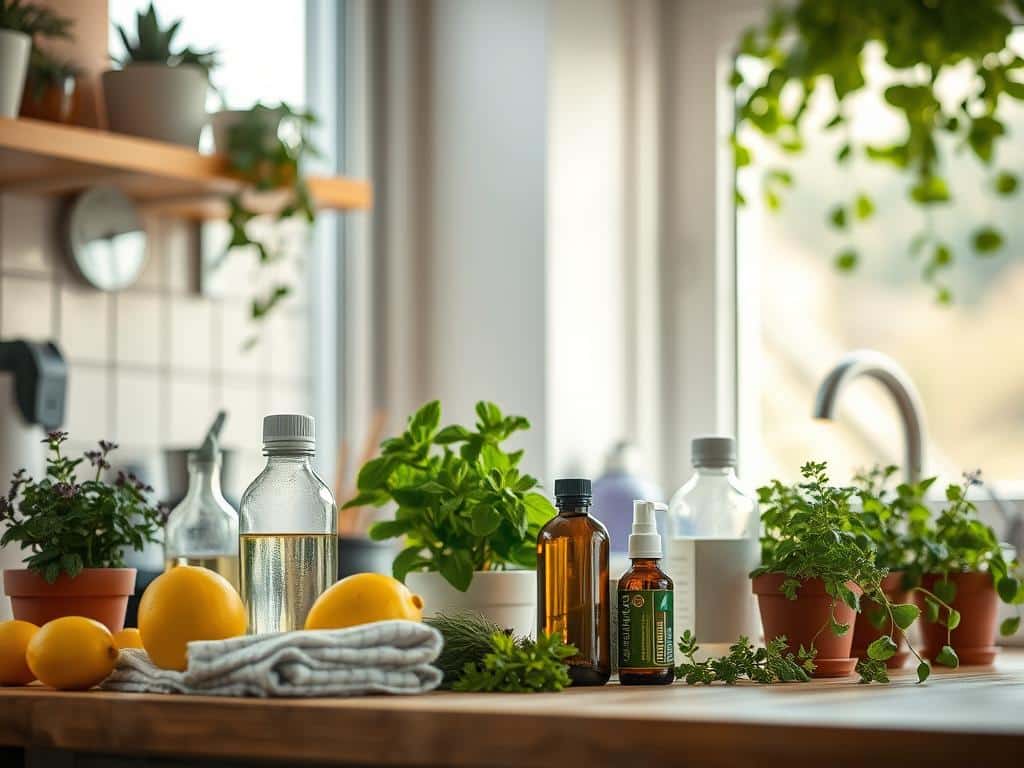
Natural Cleaning Solutions
Natural solutions like lemon juice, vinegar, and baking soda are great for a toxin-free home. They can handle many cleaning jobs without harmful chemicals. For example, vinegar works as a natural disinfectant and baking soda as a deodorizer.
The Bon Ami Powder Cleanser is a prime example of effective, natural cleaning. Made with five biodegradable ingredients, its packaging is 100% eco-friendly. This makes it a top choice for those looking to live sustainably.
Purchasing Safer Cleaning Products
When buying safer cleaning products, look for ones with eco-friendly ingredients. Blueland’s Clean Essentials Kit is available for $41 on Amazon and offers minimal impact solutions. Their starter kit includes plant-based products for cleaning glass and mirrors.
Grove Collaborative and JAWS offer sets for green cleaning too. Grove has a cleaner concentrates set for $27 on Amazon. JAWS Ultimate Cleaning Kit, for $50 on Amazon, features non-toxic products designed for sustainable living.
| Product | Price | Eco-Friendly Features |
|---|---|---|
| Supernatural Starter Set | $100 | Available on sale periodically |
| Branch Basics Concentrated Cleaner Kit | $75 | High concentration levels |
| Seventh Generation All-Purpose Cleaner | $21 for 4-Pack | Non-toxic, recyclable packaging |
| Cloud Paper Bamboo Paper Towels | $50 | Reusable and biodegradable |
Additional products include the JuniperSeed Mercantile Laundry Stain Stick for $8. The Marley’s Monsters Unpaper Towels 12-Pack is $38, promoting savings and eco-friendliness. TruEarth Laundry Strips, available in various scents and plastic-free, offer sustainable laundry care.
Choosing green cleaning solutions makes your home healthier. Opting for EPA-endorsed brands promotes smart, sustainable decisions. Donating unused products to charities or those in need supports community and environmental health.
Proper Disposal Methods for Different Cleaning Products
It’s important to dispose of cleaning products right to protect the environment. Different products need different disposal methods. For example, you can usually flush laundry detergents and dish soaps down the drain.
But, these products might have substances that could hurt wildlife and water habitats.
For solid cleaning items like bar soaps and toilet cleaners, you can throw them in the trash. Always check the packaging for how to get rid of them safely. Don’t mix products because it could cause harmful reactions.
Remember, unopened bleach is good for a year and opened bleach lasts 6-12 months. Knowing when products go bad helps you dispose of them the right way.
Recycling is key in getting rid of cleaning product containers. Many are made of recyclable materials like PET and HDPE. Check local rules to recycle things like glass and metal correctly.
In some areas, you can’t throw electronics and batteries in the trash due to pollution risks. This shows why sorting and recycling all waste matters.
Be careful with dangerous cleaning products. Ones marked as “danger” or “poison” need to go to special waste facilities. Look for EPA-certified safer options for cleaning.
For tips on preparing for air duct cleaning and waste management, check out this helpful guide.

